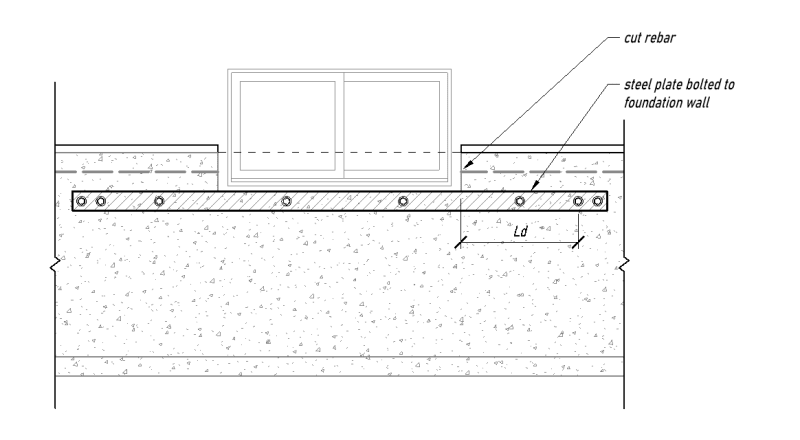fp23
Structural
- Aug 2, 2024
- 20
Can you bolt steel to existing concrete and use it as tension reinforcement? Or do you have to use something like FRP that is continuously adhered to the concrete? I don't do a ton of advanced concrete design but I'm wondering if there is code justification for something like the attached repair sketch when a concrete wall needs to be cut for a new window opening.


